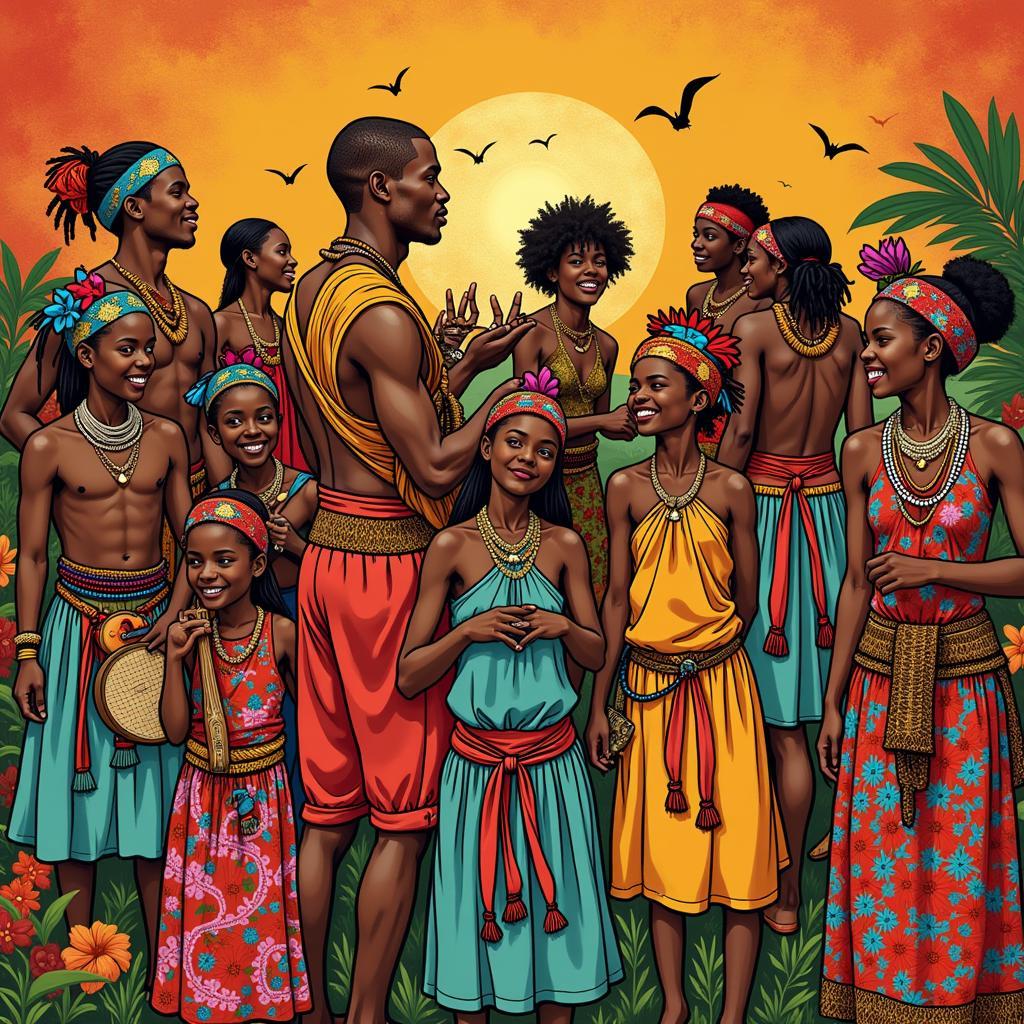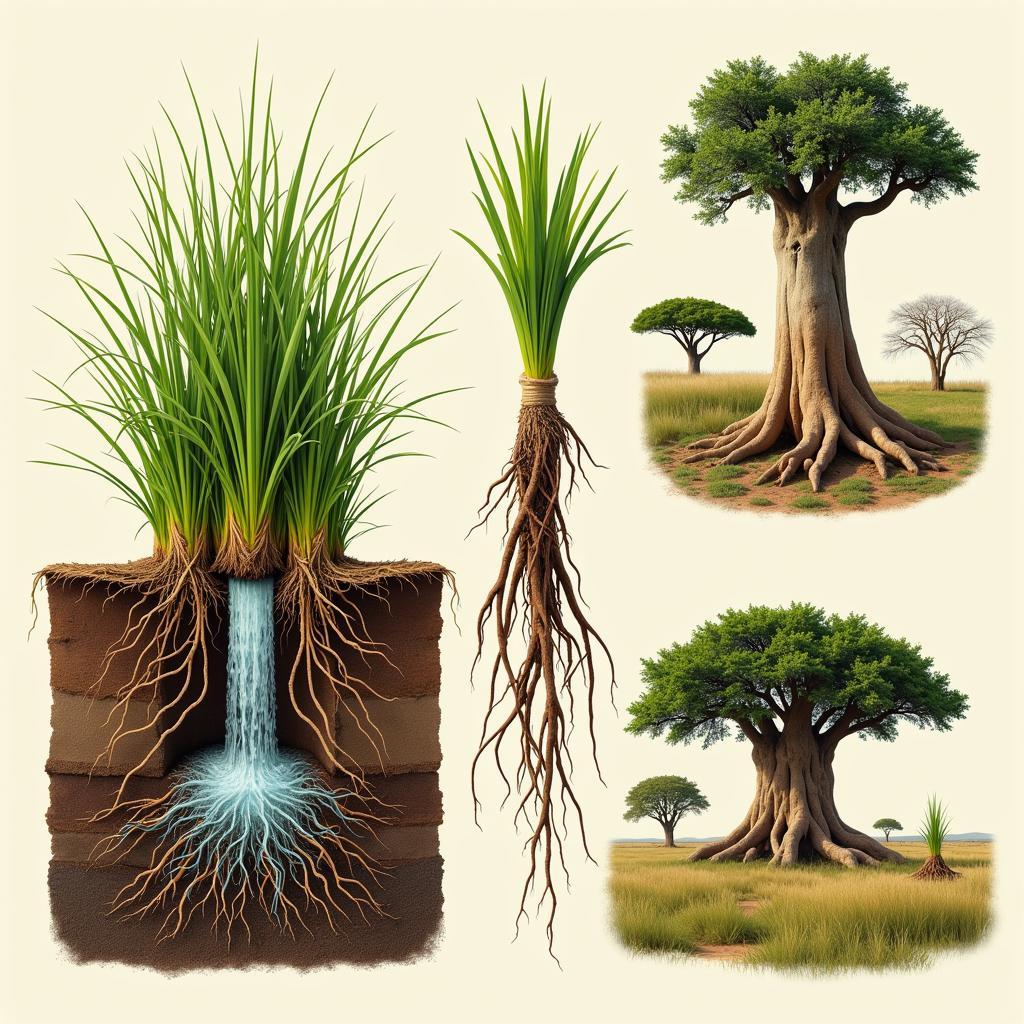The Fascinating African Bullfrog Life Cycle
The African bullfrog, scientifically known as Pyxicephalus adspersus, is a fascinating amphibian with a unique life cycle. These creatures, native to sub-Saharan Africa, are known for their impressive size, with males reaching up to 10 inches in length. Their life cycle, intricately intertwined with the African seasons, is a story of survival, adaptation, and remarkable transformations.
From Egg to Tadpole: A Race Against Time
The African Bullfrog Life Cycle begins with the onset of the rainy season. As the dry season ends and water returns to the parched landscape, male bullfrogs establish their territories in temporary ponds and pools. Their deep calls echo across the savanna, attracting females ready to mate.
Once a female chooses a mate, she lays thousands of eggs in a foamy nest on the water’s surface. This marks the start of a race against time. The ephemeral nature of these temporary water bodies means the tadpoles have a limited window to develop before the water dries up.
Within days, the eggs hatch into tiny black tadpoles. These tadpoles are voracious eaters, consuming algae and other organic matter to fuel their rapid growth. Competition for food is fierce, and some tadpoles even resort to cannibalism, consuming their smaller siblings to survive. This seemingly ruthless behavior is a survival strategy, ensuring that at least some of the offspring reach adulthood.
Metamorphosis: Transforming from Tadpole to Froglet
As the tadpoles grow, they undergo a remarkable transformation known as metamorphosis. This process, triggered by hormones, sees them develop limbs, lose their tails, and transition from an aquatic to a semi-terrestrial lifestyle. This transformation is a vulnerable time, as the young froglets are easy prey for birds, snakes, and other predators.
The duration of the tadpole stage and metamorphosis varies depending on environmental factors like food availability and water temperature. It can take anywhere from a few weeks to several months for a tadpole to fully transform into a froglet.
The Adult Life: Masters of Survival in A Harsh Landscape
Once metamorphosis is complete, the young African bullfrogs leave the water and embark on their terrestrial lives. They are significantly smaller than adults, but they possess the same remarkable adaptations that allow them to thrive in their harsh environment.
African bullfrogs are masters of water conservation. During the dry season, they burrow underground to escape the scorching sun and minimize water loss. They can remain dormant in these burrows for months, their skin secreting a protective cocoon to prevent dehydration. When the rains return, they emerge, ready to feed and reproduce, continuing the cycle of life.
Frequently Asked Questions about the African Bullfrog Life Cycle
1. How long do African bullfrogs live?
The lifespan of an African bullfrog in the wild is typically around 4-15 years. However, they can live much longer in captivity, with some individuals reaching over 20 years.
2. What do African bullfrogs eat?
African bullfrogs are opportunistic predators with a varied diet. They eat insects, worms, small snakes, rodents, birds, and even other frogs.
3. Are African bullfrogs dangerous?
While not inherently aggressive, African bullfrogs are powerful animals with a strong bite. They will defend themselves if threatened. It is important to observe them from a safe distance and avoid handling them.
4. How do African bullfrogs survive the dry season?
African bullfrogs are adapted to survive long periods of drought by burrowing underground and entering a state of dormancy. They can remain in this state for months until the rains return.
5. Where can I learn more about the African bullfrog ecology?
You can find more information on African bullfrog ecology on our website.
Discover More About the Wonders of Africa
The African bullfrog’s life cycle is just one example of the incredible biodiversity and adaptation found on the African continent. From the smallest insects to the largest mammals, each creature plays a vital role in the delicate balance of these diverse ecosystems. Continue exploring our website to learn more about the fascinating African goliath frog, another incredible amphibian, and delve deeper into the wonders of African Life.
Need Help? Contact Us!
For any assistance, please reach out to us via:
Phone Number: +255768904061
Email: kaka.mag@gmail.com
Address: Mbarali DC Mawindi, Kangaga, Tanzania.
Our dedicated customer care team is available 24/7 to assist you.




